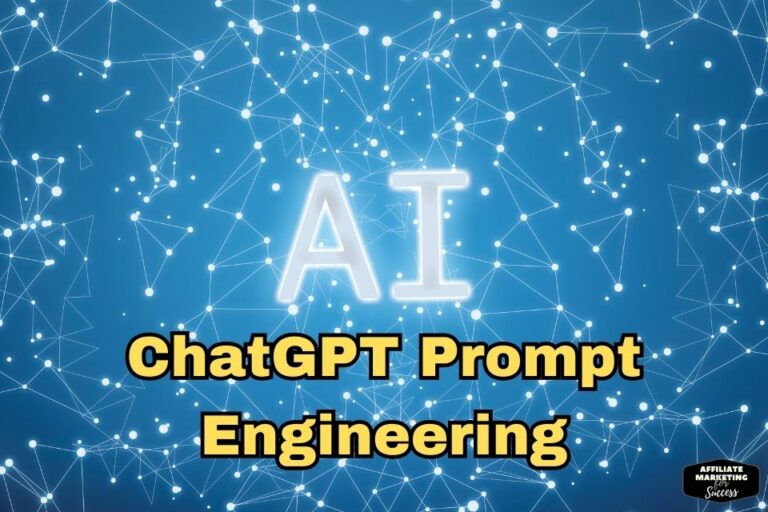GPT-3 vs GPT-4: A Comprehensive Comparison of AI Language Models
The artificial intelligence landscape has undergone a dramatic transformation in 2025, with four major players releasing groundbreaking large language models that are redefining how we approach content creation, coding, and affiliate marketing strategies.
As an affiliate marketer or AI enthusiast, choosing the right language model can significantly impact your productivity and profitability. This comprehensive comparison examines GPT-4.5, Claude 4, Gemini 2.5 Pro, and DeepSeek V3 across crucial metrics including speed, accuracy, cost-effectiveness, and real-world applications for affiliate marketing success.
Key Takeaways:
-
2025’s top AI models (GPT-4.5, Claude 4, Gemini 2.5 Pro, DeepSeek V3) reshape affiliate marketing with advanced content and coding abilities.
-
GPT-4.5 shines in conversational content; Claude 4 leads in technical SEO and coding; Gemini 2.5 Pro excels at multimodal tasks; DeepSeek V3 offers best cost-efficiency.
-
DeepSeek V3 is fastest, highest in knowledge benchmarks, and cheapest; GPT-4.5 is costliest but great for emotional engagement.
-
Each model suits different affiliate tasks: GPT-4.5 for personalized marketing, Claude 4 for SEO/automation, Gemini 2.5 Pro for large-scale/multimedia, DeepSeek V3 for bulk content.
-
Choose models based on business size and needs: DeepSeek V3 for startups, Claude 4 for balanced quality, Gemini 2.5 Pro for scale, GPT-4.5 for premium conversation.
-
Implement gradually with human oversight, track ROI, mix models by task, and stay updated to maintain a competitive edge.

The AI Revolution in Affiliate Marketing
The integration of large language models in affiliate marketing has become indispensable for modern marketers. These sophisticated AI systems enable content creators to scale their operations exponentially while maintaining quality and authenticity. Whether you’re crafting evergreen content strategies or developing long-term content plans, the choice of AI model can make or break your campaign’s success.
GPT-4.5: The Conversational Champion
OpenAI’s GPT-4.5, released in February 2025, represents a significant shift from the reasoning-focused approach of their O-series models. Instead, GPT-4.5 prioritizes natural conversation and emotional intelligence, making it feel like “talking to a thoughtful person,” according to OpenAI CEO Sam Altman.
Key Features and Specifications
GPT-4.5 offers impressive capabilities with a context window of 128,000 tokens and maximum output of 16,384 tokens. The model achieves a 62.5% accuracy rate on SimpleQA, significantly outperforming GPT-4o while maintaining the lowest hallucination rate at 37.1% among OpenAI models. Processing speed reaches 70.7 tokens per second with excellent latency of 1.11 seconds to first token.
Pricing Structure
GPT-4.5 comes with premium pricing that reflects its advanced capabilities, costing $75.00 per million input tokens and $150.00 per million output tokens. This pricing structure positions it as the most expensive option among the compared models.
Affiliate Marketing Applications
GPT-4.5 excels in ChatGPT use cases that require emotional nuance and natural conversation flow. It’s particularly effective for customer service chatbots, personalized email marketing campaigns, social media engagement, and prompt engineering for conversational marketing. While GPT-4.5 performs admirably in general conversation, its reasoning capabilities lag behind specialized models, making it less suitable for complex analytical tasks.

Claude 4: The Coding Powerhouse
Anthropic’s Claude 4 series, launched in May 2025, consists of two variants: Claude Opus 4 and Claude Sonnet 4. These models represent a quantum leap in coding capabilities and extended reasoning.
Claude Opus 4 Specifications
Claude Opus 4 stands out as Anthropic’s most powerful AI model to date, capable of working continuously on long-running tasks for several hours. In customer tests, Opus 4 performed autonomously for seven hours, achieving a commanding 72.5% on SWE-bench and 43.2% on Terminal-bench. The model features a 200,000 token context window and has been praised by industry partners as “state-of-the-art for coding”.
Claude Sonnet 4 Features
Claude Sonnet 4 delivers superior coding and reasoning while providing more precise responses. The model achieves an outstanding 72.7% SWE-bench score and offers competitive pricing at $15.00 input and $75.00 output per million tokens. Both Claude 4 models are 65% less likely to take shortcuts and loopholes compared to previous versions.
Revolutionary Capabilities
Claude 4 introduces “extended thinking with tool use,” allowing the AI to alternate between reasoning and tool usage, maintain context over extended periods, and work autonomously for hours on complex projects. This makes Claude 4 invaluable for startup success strategies using AI and complex development projects.
Affiliate Marketing Strengths
Claude 4 dominates in technical aspects of affiliate marketing, excelling in advanced SEO content optimization, complex landing page development, ChatGPT API integration projects, and multi-step workflow automation.

Gemini 2.5 Pro: The Multimodal Marvel
Google’s Gemini 2.5 Pro, released in March 2025, leads the pack in multimodal capabilities and context handling. The model represents Google’s commitment to advancing AI technology with native audio output, computer use capabilities, and Deep Think reasoning mode.
Outstanding Features
Gemini 2.5 Pro features the largest context window available at 1,000,000 tokens, making it exceptional for large document analysis and multi-file project management. The model achieves an impressive 81.7% MMLU score and currently leads the WebDev Arena coding leaderboard with an ELO score of 1415. Native audio output capabilities and Project Mariner’s computer use integration set it apart from competitors.
Competitive Pricing
Gemini 2.5 Pro offers competitive pricing at $1.25 per million input tokens and $10.00 per million output tokens. This pricing structure provides excellent value considering its advanced multimodal capabilities and massive context window.
Performance Metrics
The model excels in research-intensive tasks and has shown remarkable improvements in coding and front-end web development. It’s particularly effective for AI-powered content strategies and comprehensive market research activities.
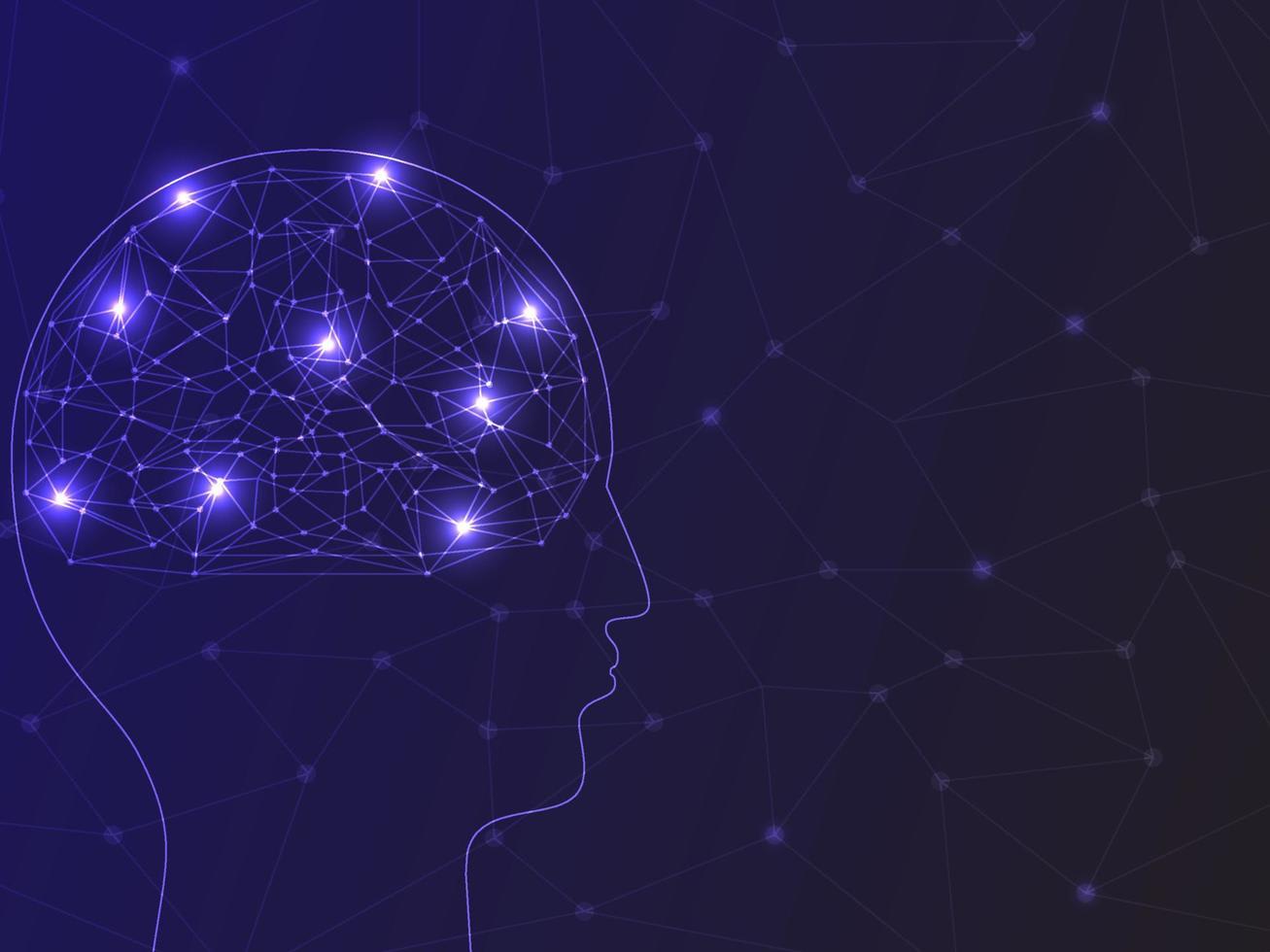
DeepSeek V3: The Cost-Effective Performer
DeepSeek V3, released in December 2024, has emerged as the dark horse in the LLM race, offering exceptional performance at unbeatable prices. This model represents a significant achievement in open-source AI development.
Impressive Specifications
DeepSeek V3 features 671 billion total parameters with 37 billion activated per token, achieving the highest MMLU score at 88.5% among all compared models. The model processes tokens at an impressive 82 tokens per second, making it the fastest in terms of processing speed. Training on 14.8 trillion diverse and high-quality tokens, DeepSeek V3 demonstrates remarkably stable performance throughout its development process.
Unmatched Pricing
DeepSeek V3 offers revolutionary pricing at just $0.27 per million input tokens and $1.10 per million output tokens. This pricing structure makes it 99% more cost-effective than GPT-4.5, providing exceptional value for budget-conscious affiliate marketers.
Performance Excellence
The model achieves state-of-the-art performance among open-source models and competitive results with leading closed-source alternatives. DeepSeek V3’s training process was remarkably stable, with no irrecoverable loss spikes or rollbacks required throughout the entire development cycle.
Affiliate Marketing Advantages
For budget-conscious affiliate marketers, DeepSeek V3 offers cost-effective content scaling, high-quality product descriptions, efficient ChatGPT alternatives for routine tasks, and excellent ROI for high-volume content production.
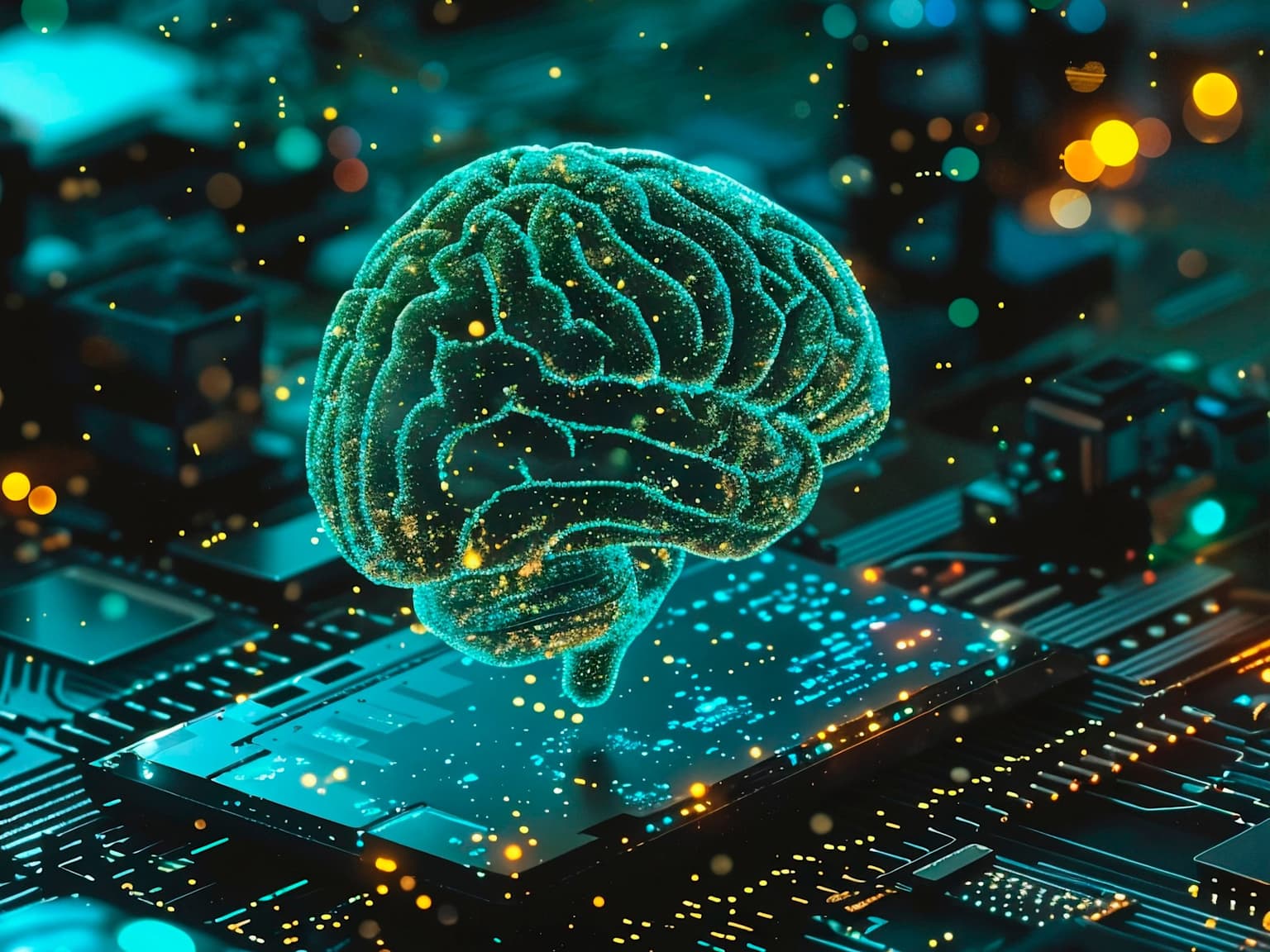
Comprehensive Benchmark Comparison
The performance comparison reveals significant differences across key metrics. DeepSeek V3 leads in MMLU scores at 88.5%, followed by Claude 4 at 85.6%, Gemini 2.5 Pro at 81.7%, and GPT-4.5 at 62.5%. For coding capabilities measured by SWE-bench, Claude 4 achieves 72.7%, DeepSeek V3 reaches 68.2%, Gemini 2.5 Pro scores 63.2%, and GPT-4.5 attains 54.6%.
Processing speeds vary considerably, with DeepSeek V3 leading at 82 tokens per second, followed by Gemini 2.5 Pro at 72 tokens per second, GPT-4.5 at 70.7 tokens per second, and Claude 4 at 58 tokens per second. Context windows range from DeepSeek V3’s 64,000 tokens to Gemini 2.5 Pro’s massive 1,000,000 tokens.
Affiliate Marketing Performance Analysis
When evaluating these models specifically for affiliate marketing applications, each offers distinct advantages across various use cases 1618. Content creation excellence varies significantly, with GPT-4.5 scoring 9.2/10 for conversational content and emotional appeal, Claude 4 achieving 9.1/10 for technical content and SEO optimization, Gemini 2.5 Pro reaching 8.5/10 for research-based content creation, and DeepSeek V3 maintaining 8.7/10 for balanced performance across all content types.
Cost Efficiency for Scale
When considering affiliate marketing tools and budget allocation, DeepSeek V3 achieves unbeatable cost efficiency at 9.8/10, Gemini 2.5 Pro provides good balance of features and cost at 9.0/10, Claude 4 offers moderate pricing for premium features at 7.5/10, and GPT-4.5’s premium pricing limits scalability at 6.0/10.
Real-World Use Cases and Applications
E-commerce Product Descriptions
For creating compelling product descriptions that convert, Claude 4 leads with its analytical approach and technical precision, DeepSeek V3 offers the best value for high-volume requirements, and GPT-4.5 excels in emotional appeal and persuasive copy. These capabilities directly impact how to increase your affiliate marketing conversion rate through better product presentation.
SEO Content Optimization
When developing SEO strategies for affiliate marketing, Gemini 2.5 Pro excels in keyword research and competitive analysis, Claude 4 provides superior technical SEO recommendations, and DeepSeek V3 offers cost-effective bulk content optimizatio.
Social Media Marketing
For social media affiliate marketing campaigns, GPT-4.5 creates the most engaging, conversational content, Gemini 2.5 Pro handles multimedia content creation effectively, and Claude 4 develops sophisticated multi-platform strategies.
Advanced Integration Strategies
API Integration and Automation
For developers building affiliate marketing automation systems, Claude 4 offers the most robust API for complex workflows, Gemini 2.5 Pro provides excellent multimodal capabilities, and DeepSeek V3 delivers the best cost-to-performance ratio. These integrations support how chatbot helps developers create more efficient marketing systems.
Email Marketing Campaigns
When creating effective email marketing strategies, GPT-4.5 excels in personalization and emotional connection, Claude 4 creates sophisticated segmentation strategies, and Gemini 2.5 Pro handles large subscriber lists efficiently.
Performance Metrics and Speed Analysis
Processing speed becomes crucial when handling high-volume affiliate marketing operations 1115. DeepSeek V3 leads at 82 tokens per second, Gemini 2.5 Pro achieves 72 tokens per second, GPT-4.5 maintains 70.7 tokens per second, and Claude 4 processes 58 tokens per second but offers more thoughtful responses.
For real-time applications like chatbots and customer service, GPT-4.5 provides excellent 1.11-second time to first token, Gemini 2.5 Pro optimizes for quick responses, Claude 4’s extended thinking mode adds latency, and DeepSeek V3 maintains competitive response times.
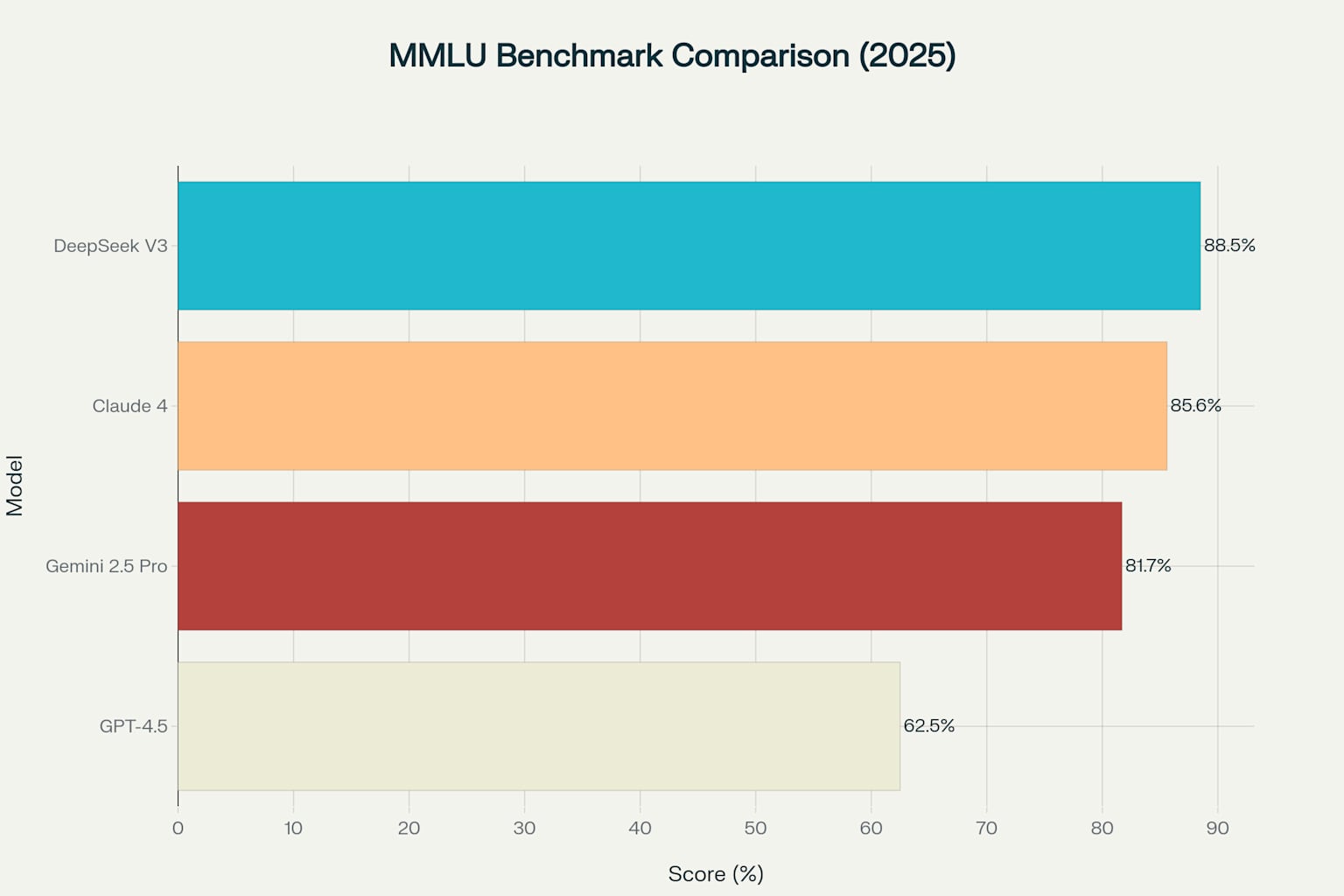
Cost-Benefit Analysis for Affiliate Marketers
Budget-Conscious Strategies
For affiliate marketers operating on tight budgets, DeepSeek V3 emerges as the clear winner, offering 99% cost savings compared to GPT-4.5, superior MMLU performance, and excellent content quality for the price. This makes it ideal for how to make money with affiliate marketing at scale.
Premium Performance Requirements
For high-stakes affiliate campaigns requiring maximum quality, Claude 4 provides the best balance of advanced reasoning capabilities, extended work sessions, and professional-grade output quality. This supports affiliate marketing success through superior content creation.
High-Volume Content Production
For scaling content operations, Gemini 2.5 Pro offers massive context windows for batch processing, competitive pricing structure, and multimodal content capabilities . This enables efficient how to create an affiliate marketing strategy that scales effectively.
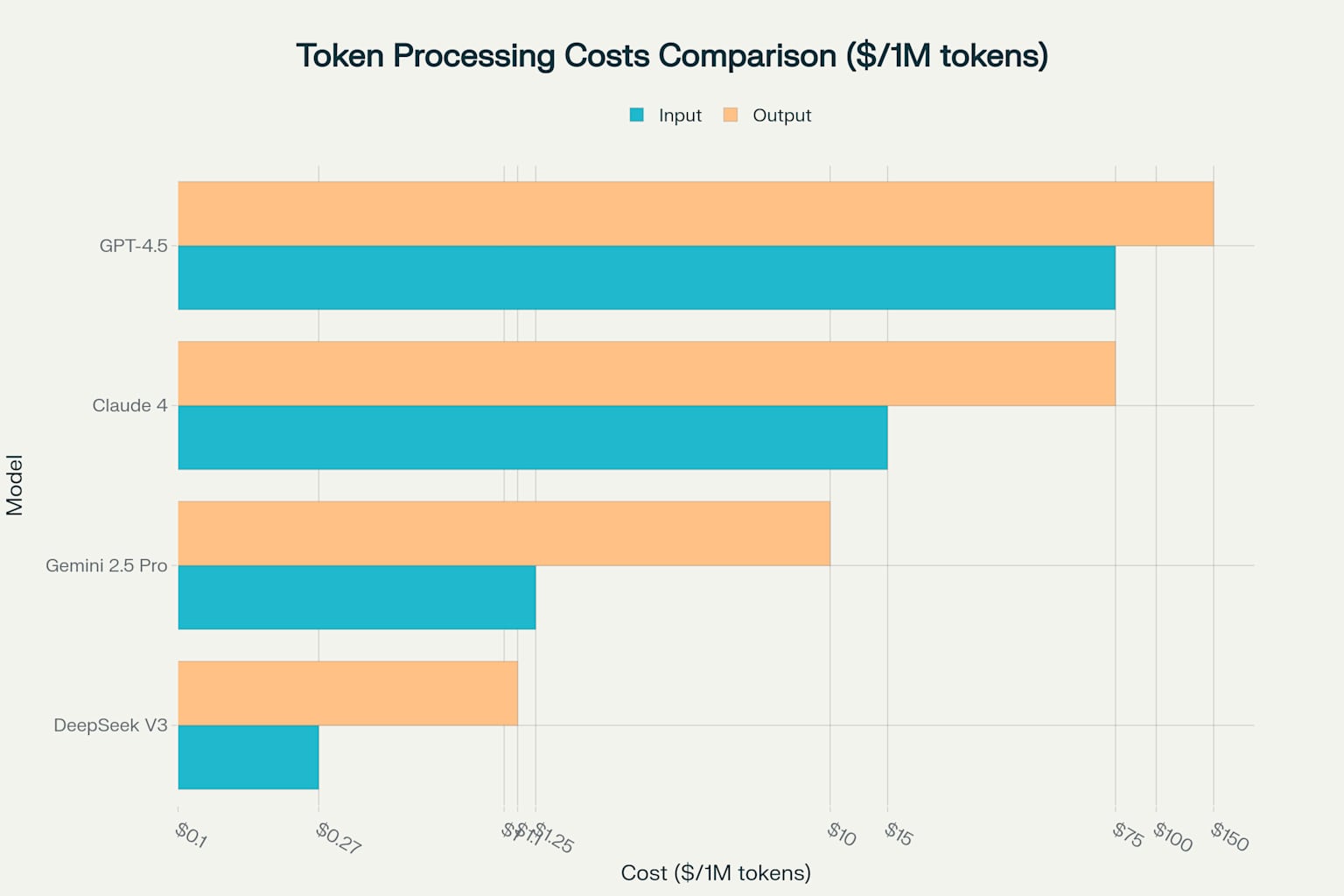
Future-Proofing Your Affiliate Marketing Strategy
Emerging Trends and Capabilities
The LLM landscape continues evolving rapidly, with key trends affecting AI in affiliate marketing including multimodal integration, extended reasoning capabilities, tool integration with external APIs and databases, and cost optimization through more efficient models. These developments directly impact the future of AI affiliate marketing strategies.
Recommended Model Selection Strategy
Based on comprehensive analysis, the recommendation framework varies by business size and requirements. For startups and small businesses, DeepSeek V3 offers primary cost efficiency with Gemini 2.5 Pro as a feature-rich alternative. For established affiliate marketers, Claude 4 provides balanced performance with Gemini 2.5 Pro for large-scale processin. For premium campaigns, Claude 4 delivers maximum quality with GPT-4.5 offering conversational excellence.
Implementation Best Practices
Getting Started with AI Integration
To successfully implement these tools in your affiliate marketing strategy, start small with one model for specific tasks, measure performance through ROI and content quality metrics, scale gradually based on proven results, and stay updated on model improvements and new capabilities. This approach aligns with affiliate marketing strategies that emphasize measured growth.
Common Pitfalls to Avoid
When implementing AI tools, avoid relying solely on AI-generated content without human oversight, don’t choose models based solely on cost, ensure compliance and disclosure requirements are met, and maintain content authenticity and brand voice consistency. These practices help avoid common affiliate marketing mistakes that can damage long-term success.
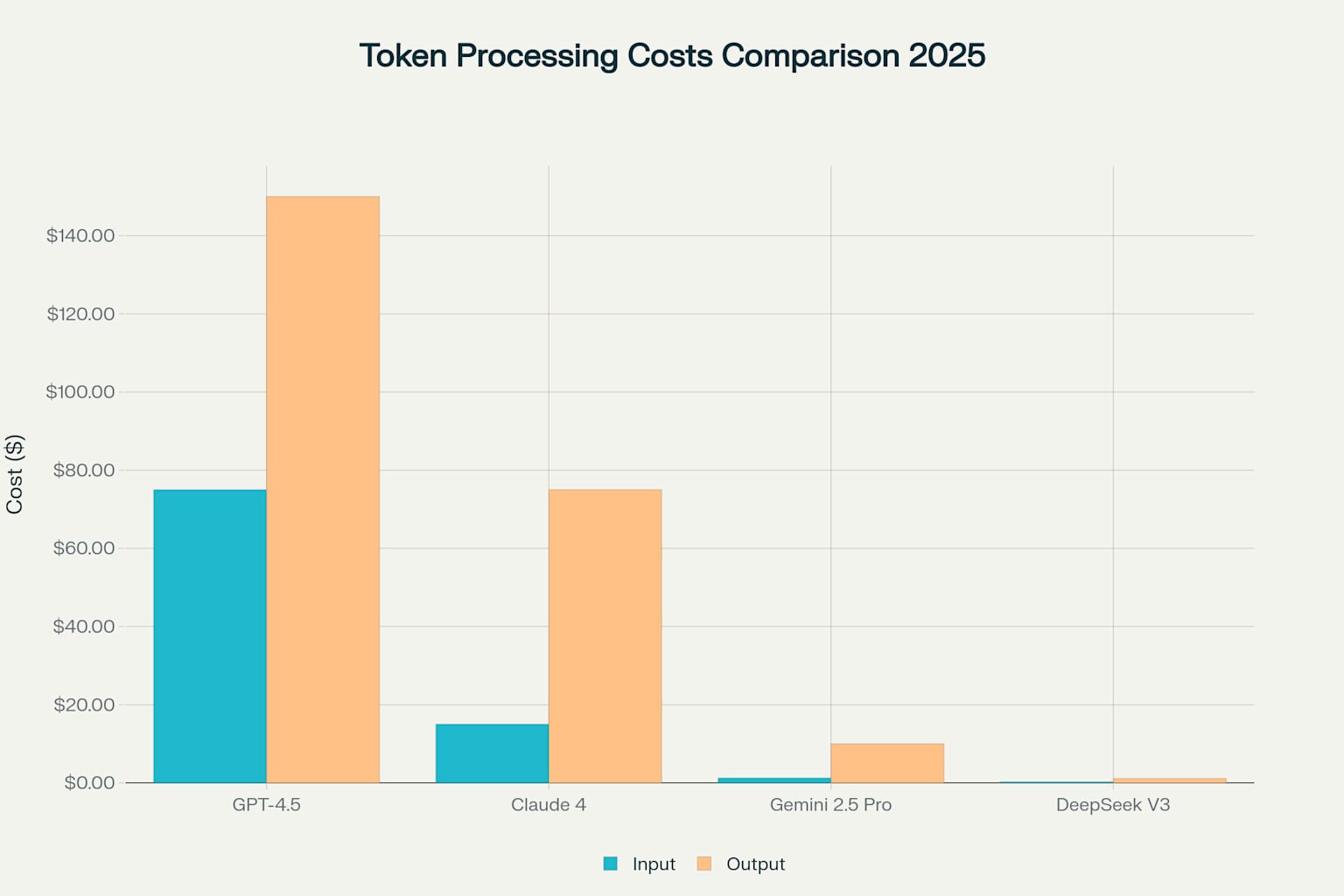
Conclusion
The 2025 large language model landscape offers unprecedented opportunities for affiliate marketers to scale their operations and improve content quality. Each model brings unique strengths: GPT-4.5 excels in conversational marketing and emotional intelligence, Claude 4 dominates in technical precision and extended reasoning, Gemini 2.5 Pro leads in multimodal capabilities and research tasks, and DeepSeek V3 provides exceptional value and performance for cost-conscious marketers.
The optimal choice depends on your specific needs, budget constraints, and performance requirements . For most affiliate marketers, a hybrid approach utilizing multiple models for different tasks will yield the best results. As the AI landscape continues evolving, staying informed about these developments and adapting your strategy accordingly will be crucial for maintaining competitive advantage in the dynamic world of affiliate marketing.
Remember that while these tools are powerful, they work best when combined with human expertise, strategic thinking, and authentic brand voice. The future of affiliate marketing lies not in replacing human creativity, but in augmenting it with AI capabilities that enable unprecedented scale and efficiency.
References:
- https://ppl-ai-file-upload.s3.amazonaws.com/web/direct-files/attachments/62715763/8d8c9dc9-5932-429b-bc0d-1ed04d70ca65/paste.txt
- https://platform.openai.com/docs/models/gpt-4.5-preview
- https://www.glbgpt.com/blog/gpt-4-5-features-improvements-2025/
- https://www.techtarget.com/whatis/feature/GPT-45-explained-Everything-you-need-to-know
- https://www.digitalbricks.ai/blog-posts/chatgpt-4-5-features-limitations-gpt-4o-comparison-and-everything-you-need-to-know
- https://www.amitysolutions.com/blog/claude-4-ai-coding-tool-developers
- https://blog.google/technology/google-deepmind/google-gemini-updates-io-2025/
- https://en.wikipedia.org/wiki/DeepSeek
- https://www.theverge.com/news/672705/anthropic-claude-4-ai-ous-sonnet-availability
- https://felloai.com/2025/05/we-tested-claude-4-gpt-4-5-gemini-2-5-pro-grok-3-whats-the-best-ai-to-use-in-may-2025/
- https://www.reddit.com/r/Bard/comments/1kwpzpv/spent_104_testing_claude_sonnet_4_vs_gemini_25/
- https://www.entelligence.ai/blogs/claude-4-vs-gemini-2.5-pro
- https://www.affiliatesummit.com/blogs/googles-o-2025-update-rewriting-future-affiliate-marketing
- https://arxiv.org/pdf/2412.19437.pdf
- https://www.baseten.co/blog/comparing-tokens-per-second-across-llms/
- https://pollthepeople.app/ai-tools-affiliate-marketers/
- https://www.youtube.com/watch?v=qzFrGkjiO8Y
- https://somaffiliate.com/how-deepseek-ai-is-transforming-affiliate-marketing/
- https://artificialanalysis.ai/models/gpt-4-5
I’m Alexios Papaioannou, an experienced affiliate marketer and content creator. With a decade of expertise, I excel in crafting engaging blog posts to boost your brand. My love for running fuels my creativity. Let’s create exceptional content together!







